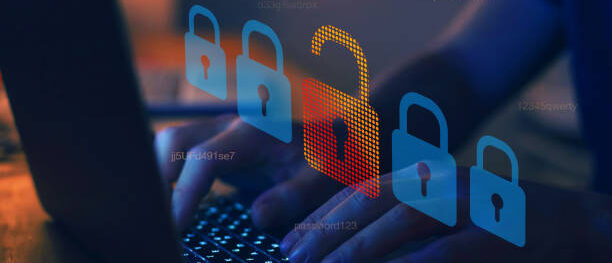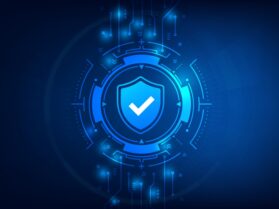Data protection is important in every sector, whether it is the banking sector, healthcare, manufacturing, IT organizations, and more. Implementing holistic security measures in place is vital for protecting the sensitive information of your organization from threats, data loss, or corruption. It also helps to establish trust between individuals and enhances the credibility of your organization.
Here’s a guide wherein we’ll explore insights into several aspects of data protection, including both physical and digital security practices. By implementing these strategies, organizations can prevent their valuable sensitive data from breaches and other vulnerabilities, thereby boosting their overall security posture.
Essential Data Protection Strategies for Organizations
Data protection is a core practice that should be on the top of your organization’s to-do list. Fortunately, the below-listed strategies below can help in the long run.
1. Video Surveillance
As the world is going digital, however, physical security is something that cannot be overlooked. Installing video cameras that are well-equipped with motion sensors and night vision is a significant step in safeguarding critical facilities. This is one of the valuable practices that help to easily identify unauthorized access attempts, protect against thefts, and monitor employees who try to steal sensitive information. In organizations, video surveillance is a comprehensive security strategy that drives the desired outcomes.
2. Prefer Recycling and Locking
Employees should be keen on considering the security factor when working in an organization. They should ensure the doors, windows, desk drawers, and PCs are locked when they leave the desk. Furthermore, when it comes to paperwork, all sensitive documents should be stored securely and should be destroyed when no longer needed. The password, ID card access, and lock codes should never be shared with anyone within the organization.
3. Erase Data and Destroy Further
Data that is stored on the SSD disks or hard drives should be completely erased before discarding or recycling to make sure that the data is irretrievable. Over time, discard the hard disks with the critical data under the surveillance of a designated security IT engineer. This is important to prevent data leaks and gaining unauthorized access through discarded devices. By considering this factor, you can be rest assured about the security of your organization.
4. Implementing Database Auditing and Change Management
It is crucial to maintain detailed logs of database and file server activities. A thorough report of the login activity should be maintained. Furthermore, any account that exceeds the maximum number of failed login attempts should be triggered automatically to the information security administrator for further investigation. The knack of monitoring changes to sensitive information and the permissions associated with it is essential for building effective security policies. Some of the third-party tools like Auditor and Netwrix help to simplify the process of user activity auditing and change management.
5. Using Data Encryption
Data encryption is the standard security practice. All the critical data in your organization should be encrypted to safeguard it from hackers and cybercriminals. This includes both the data, which is at rest, and transit, meaning portable devices or internet connection. In the case of desktops that store all the important information, encrypting hard drives guarantees that even in case of happenings the data is safe and sound.
6. Hardware-Based Encryption
Hardware-based encryption is another best security strategy that organizations should incorporate. A Trusted Platform Module (TPM) is a chip that stores cryptographic keys, certificates, and passwords, assisting in key generation and protection. Additionally, TPM can be used for encrypting the whole disk such as BitLocker, and can be easily installed on the motherboard. The main goal of hardware-based encryption is to provide top-level data protection.
7. Backing Up Your Data is Safe
Data backups are the true saviors in the event of data loss and breaches. Organizations can recover the data quickly if they opt for the data backup service. Different backup strategies can also be implemented such as full, differential, and incremental backups. Which backup strategy to opt for totally depends on the organization's needs. To add it up backups need to be stored in different geographical locations to mitigate risks associated with accidents or natural disasters.
8. Use RAID on Your Servers
RAID is basically the way of storing the same data in multiple places, this means hard disks or Solid-State Drives (SSDs). It is a great building block for protecting data and fault tolerance. Different RAID levels include RAID 0, RAID 1, RAID 3, RAID 4, RAID 5, RAID 6, RAID 1+0, and RAID 0+1, all depending on the degrees of data protection. Implementation of the appropriate RAID levels is based on the requirements of your organization.
9. Employ Clustering and Load Balancing
Clustering and load balancing are both used to handle heavy workloads and improve overall system performance, guaranteeing higher availability and redundancy. Clusters function by enabling multiple computers to operate as a single server, supporting parallel processing. On the other hand, load balancing distributes workloads across multiple servers, reducing the downtimes and improving server response time.
10. System Hardening
System hardening is the process of configuring operating systems and software to amplify security. This also involves disabling unnecessary services and enabling only those services required for smooth operations. System hardening varies between operating systems, with Linux and Windows with different configurations. This process is increasingly essential in the context of data protection.
11. Securing Web Server
Most cybercriminals prey on the web server, making it unavailable and accessible to users online. Thus, it is paramount for organizations to keep their web server up to date, perform security checks, monitor and control access to executable scripts, use filters, and more. Applying filters helps in restricting traffic to only what is necessary, boosting security and productivity.
12. Email Server and FTP Server Security
Email servers are the principal cornerstone for most organizations. Protecting them from spam and malware is essential. Active scanners on email servers can reduce the introduction of injecting malware into the network. Email servers should be protected against automated attempts to gain access to the system by configuring routers' ACL Deny list. One more noteworthy pinpoint is disabling anonymous user accounts and using
13. Apply a Proper Patch Management Strategy
Operating systems and applications need to be kept up to date to protect your data. This includes operating system patches, which come in various forms. Testing patches to make sure they do not interfere with functionality is important. Application patches must also be kept up to date to prevent them from being exploited by attackers. Setting up maintenance days to test and install patches is a good practice.
14. Protect Your Data from Insider Threats
An increasing number of organizations are concerned about insider threats. Insider incidents make up a large percentage of data breaches, and they can be either authorized or unauthorized. To protect your data, it is important to use endpoint security systems. These systems are designed to protect your data from unauthorized access and to monitor user activities.
15. Use Endpoint Security Systems to Protect Your Data
Endpoint security is a key component of data protection. It helps protect your data by reducing the risk of unauthorized access to your system. Antivirus, anti-sabotage, and intrusion detection systems are all important components of endpoint security.
16. Perform Vulnerability Assessments and Cybersecurity Penetration Tests
Vulnerability assessments involve scanning for open ports and vulnerabilities in your systems. These assessments help identify potential weaknesses that could be exploited by attackers. They cross-reference discovered vulnerabilities with known services and patch levels.
Penetration testing, on the other hand, simulates attacks to find security vulnerabilities. It comes in various flavors, including targeted, external, internal, blind, double-blind, black box, and white box testing. Penetration tests actively exploit vulnerabilities to determine the best mitigation techniques.
17. Secure Wireless Networks
Wi-Fi networks are common entry points for attackers. Implement robust security measures for your wireless networks. Use strong encryption methods like WPA3 and regularly change network passwords. Segment your network into separate zones to minimize the impact of a breach. Implement strong firewall rules for wireless traffic and conduct regular audits to ensure compliance.
18. Employee Training and Awareness
A well-informed workforce plays a crucial role in data protection: Conduct regular training sessions for employees. Educate them about security best practices, phishing awareness, and social engineering. Encourage prompt reporting of suspicious activities. Security awareness campaigns significantly reduce the risk of security incidents caused by human error.
19. Create an Incident Response Plan
No organization is immune to security incidents. Having a well-defined incident response plan is essential. This plan should include procedures for identifying, managing, and mitigating security incidents. Define roles and responsibilities for incident response teams, establish communication protocols, and regularly test the plan through tabletop exercises. A swift and effective response can minimize the impact of a breach.
20. Data Classification and Access Control
Classifying data based on its sensitivity is crucial. Categorize data as public, internal, confidential, and highly confidential. Implement role-based access control (RBAC) to restrict data access to authorized personnel only. Data encryption and data loss prevention (DLP) tools can further protect sensitive information from unauthorized access or sharing.
21. Compliance with Data Protection Regulations
An extensive range of data protection regulations, such as HIPAA, GDPR, and CCPA, need organizations to abide by specific data protection standards. Make sure compliance with these regulations by understanding all the legal requirements, and implementing security measures. Non-compliance can lead to severe penalties and legal consequences.
22. Disaster Recovery and Business Continuity Planning
Certainly, disasters whether natural or man-made, can disrupt business operations and jeopardize data security. Develop a robust disaster recovery and business continuity plan (DR/BCP). This plan includes data backup and restoration procedures, alternative workspaces, and mechanisms for ensuring smooth operations in case of any emergencies.
23. Secure Your Mobile Devices
Many times mobile devices are used for work-related tasks, and thus need to be highly secured. Implement MDM (Mobile Device Management) solutions to enforce security policies, remotely wipe in case of data loss or theft and monitor the device activity. All mobile devices should have access to the organization’s virtual private network (VPN) for secure data transmission.
24. Regular Security Audits and Penetration Testing
Security audits and penetrating testing are crucial to ensure the effectiveness of your data protection measures. Involve third-party security experts to assess your organization's infrastructure, weaknesses, and vulnerabilities. These assessments need to be conducted annually and after significant infrastructure changes.
25. Data Privacy Impact Assessments (DPIAs)
DPIAs are an integral part of privacy and data protection. They help to evaluate how data processing activities may impact individuals' privacy and offer insights into mitigating risks. DPIAs are important especially when new data processing activities or technologies to ensure compliance with privacy regulations.
26. Secure Cloud Services
With the increasing adoption of cloud services, it's essential to secure your cloud-based data and applications. Choose a trusted cloud service provider that offers robust security features. Implement strong access controls and encryption for data storage in the cloud. Monitor the cloud environments regularly for data breaches or threats.
27. Collaborate with Security Experts
Collaborating with the cybersecurity team within the organization is a proactive approach to data protection. Sharing information, threat intelligence, and cooperative security efforts can help organizations stay informed about emerging threats and vulnerabilities.
28. Network Segmentation
Network segmentation is the process of dividing your network into smaller, isolated segments to decrease the risk of potential threats. Segmented networks can help in preventing lateral movement by attackers. Plus, access controls, intrusion detection systems (IDS), and firewalls to maintain separation between the network segments.
29. Secure Development Practices
If your organization develops software or applications, ensure that proper secure coding practices are followed. Start with a software development life cycle (SDLC) that includes security testing at different stages of development. Keep updating and patching all the software for vulnerabilities. Also, third-party codes and libraries should be reviewed for security carefully.
30. Secure Remote Access
Organizations are following remote or hybrid work policies. In this scenario, there is the risk of security issues. Thus, secure remote access by implementing VPNs, two-factor authentication, and encryption for data transmission. Review and update the remote access policies to adapt to changing work environments.
31. Physical Security Measures
Don’t look over physical security. Secure web servers, data centers, limiting access controls,
surveillance cameras, and alarm systems. Restrict physical access to authorized persons only.
32. Identity and Access Management (IAM)
Implement a comprehensive IAM system to manage user identities, roles, and access permissions. This comprises single sign-on (SSO) solutions, multi-factor authentication (MFA), and privileged access management (PAM). Regularly review and update user access rights to be assured of the principle of least privilege (PoLP).
33. Secure Supply Chain Practices
Confirm first if your third-party vendors and suppliers cling to security and privacy standards. Analyze their security practices and include security requirements in contracts and agreements. The overall security of your supply chain can have an impact on your data protection.
34. Threat Intelligence and Monitoring
Take advantage of threat intelligence feeds, security information, and event management systems (SIEM) for monitoring network and system activity. Constant monitoring can assist in identifying and responding to threats in real-time. Anomalies and suspicious activities need to be investigated correctly.
35. Data Masking and Anonymization
In the situations where sensitive data needs to be shared, usage of data masking or anomaly techniques to safeguard privacy. These methods replace sensitive data with pseudonymous information, providing that the original data remains confidential while empowering specific tasks.
36. Artificial Intelligence and Machine Learning
Adopt machine learning (ML) and artificial intelligence (AI) to strengthen data protection. These technologies can easily detect and respond to threats effectively by analyzing huge amounts of data in real-time. AI and ML can be used for behavior analysis, anomaly detection, and predictive security.
37. Red Team and Blue Team Exercises
Arrange red team vs blue team exercises within your organization. Red teams denote attacks, while blue teams defend against them. These exercises help test and enhance your security measures, identify vulnerabilities, and take quick actions for incident response capabilities.
38. Continuous Improvement
Data protection is a continuous process. Frequently review and update your security policies and measures to adapt to evolving threats. Stay in the know about your security practices and be prepared to amend to adjust your strategy accordingly.
39. Legal and Ethical Considerations
Consider the legal and ethical aspects of data protection. Safeguard that your data handling practices align with privacy laws and ethical standards. Transparent and ethical data practices can improve your organization’s reputation and trustworthiness.
40. Document Data Protection Policies
Document your data protection policies. Make these documents accessible to all employees, and review and update them. Having properly documented policies ensures that everyone in the organization clearly understands their roles and responsibilities in the organization.
By blending these additional best practices with the previous ones, organizations can build a robust data protection strategy that can lower the risk, safeguard sensitive information, and maintain trust and integrity in today’s digital landscape. Data protection is a combined responsibility that needs vigilance, adaptability, and a proactive approach to the cybersecurity field.
41. Disaster Recovery Planning
Create a disaster recovery plan to ensure smooth business continuity in case of these disasters or any other catastrophic events. The DRP needs to include influential strategies for data backups, off-site storage of critical data, and system recovery. Keep testing and updating the plan to account for changes in your environment.
42. Data Retention and Disposal
Implement a clear data retention policy to know how long data should be retained and when it should be disposed of. Appropriate disposing of data includes milling physical documents, wiping digital storage devices securely, and ensuring there are no sensitive data remnants.
43. Provide Security Awareness Training
Arrange security awareness training for employees to educate them about security risks and best practices. Well-trained employees serve as your first line of defense against phishing, social engineering, and other types of threats. Continuous training should be held to keep the employees in the know of the ever-evolving security risks.
44. Incident Response Plan
Developing a robust incident response plan is vital for any organization. It showcases the steps to follow in the event of a security incident. Assign roles and responsibilities, establish communication channels, and prepare procedures for reporting, assessing, and reducing the risk of security breaches. Also, test the Incident Response Plan through fake exercises.
45. Secure Mobile Device Management
Mobile devices such as tablets and smartphones are rewiring our daily lives, however come with unique security challenges. Implementing secure mobile device management (MDM) solutions for controlling and protecting mobile devices used by your employees. Incorporate the security policies including encryption, app whitelisting and remote wipe capabilities.
46. Secure Cloud Practices
Organizations relying on the cloud for storing their data should ensure the security of their data. Understand the responsibility model with cloud providers and configure security settings, access controls and encryption messages as required.
47. Offboarding of Employees
Whenever an employee leaves the organization, a well-defined offboarding process recalls their access rights to all data and systems. This minimizes the risk of dissatisfied employees or unauthorized individuals trying to gain access to sensitive information.
48. Preventing Data Loss (DLP)
Enforce a data loss prevention solution that identifies, monitors, and protects sensitive information. DLP tools can prevent the risk of data loss by monitoring and controlling data transfers across different networks and endpoints, including removable storage devices and emails.
49. Secure Collaboration Tools
Integrate secure communication and collaboration tools for facilitating teamwork while keeping data security a priority. Further, tools like secure file-sharing platforms and encrypted messaging apps can help protect sensitive data during exchanges and collaborations.
50. Regulatory Compliance
Keep informed about relevant data protection standards and regulations that apply to your geographic area and industry. Make sure that your data protection practice lines up with all the legal requirements such as the General Data Protection Regulation (GDPR), Health Insurance Portability and Accountability Act (HIPPA) and others.
51. Data Encryption for Communication
Encrypting data during transmission, particularly when it travels over public networks. Secure communications with technologies like Transport Layer Security (TLS) and Secure Socket Layer (SSL) to prevent data interception and eavesdropping.
52. Secure DNS and Web Filtering
Employ secure domain name systems and web filtering solutions for defending against malicious domain names, websites and any of the online threats. DNS filtering has the potential to block access to malicious domains and lower the risk of malware infections.
53. Secure Backup and Recovery
Check if your data backup and recovery services are secure. The backed-up data should always be encrypted, and the right recovery procedures need to be tested to ensure data integrity and availability during devastating cyberattacks.
54. Secure Network Configuration
Closely review and secure network configurations to reduce exposure to cyber-attacks. Eliminate user access controls, segment the network to restrict unauthorized access, and more.
55. Secure VoIP and Unified Communications
If your organization utilizes Voice Over Internet Protocol (VoIP) and unified communications, secure these systems to protect video and voice communications. Also, employ strong authentication methods and encryption to prevent eavesdropping.
56. Secure Data Center Practices
For most organizations, data centers are the heart and soul of their operations. Implement security measures like redundant power sources, fire suppression systems, Intrusion detection, and firewall configuration prevention systems to protect the data center infrastructure from potential threats.
57. Security Information Sharing
Take an active part in information sharing and analysis centers (ISACs) and industry groups to exchange information related to threat intelligence. Discuss challenges and solutions with your peers. Sharing security information will help you stay one step ahead of the incoming threats.
58. Secure File Integrity Monitoring
Enforce file integrity monitoring (FIM) solutions for detecting unauthorized changes to the files, documents, and systems. FIM helps to easily identify potential threats, breaches, and unauthorized access.
59. Secure Vendor and Third-Party Relationships
Make sure to examine the vendors or third-party partners you are dealing with. Verify if they adhere to your data protection standards, as a single negligence in their security can greatly affect your organization.
60. Security-Aware Culture
Security-first culture can surely be beneficial to create a safer and secure environment in the organization. Keep encouraging employees to report security incidents and maintain a culture of accountability for data protection.
61. Safe International Data Transfers
In the case your organization deals with data transfers across international borders, then being aware of cross-border data transfer regulations is a requisite. Organizations must abide by the data protection laws that govern the international transfer of data to protect privacy and security.
62. Secure Print Management
Implementing secure print management solutions is extremely vital to prevent unauthorized access to printed documents. When proper security measures are put in place, the solutions need authentication at the printer before the documents are released for printing.
63. Secure IoT Devices
IoT is changing the everyday scenario, however, it is giving rise to new security challenges. Necessary steps should be taken to secure IoT devices such as changing default passwords, updating firmware, and segregating IoT networks from critical systems.
64. Secure Database Access
Limiting the access controls for databases containing sensitive data. Also ensuring that only authorized individuals can access, modify, or query the database and maintain an audit of all the database activities.
65. Insider Threat Detection
It is a critical security strategy to incorporate in an organization. Insider threat detection detects the threats inside the organization. This is done by monitoring employee behavior, meaning identifying unusual or suspicious activities that can be an alarming sign of insider threats.
66. Secure Cloud Access Broker
Utilizing cloud access broker (CAB) solutions for securing and monitoring cloud services. CABs provide complete visibility to cloud usage and implement security policies for cloud access.
67. Security Information and Event Management (SIEM)
Try implementing an SIEM solution for centralizing and managing security-related events. SIEM helps identify and respond to security incidents by analyzing log data from various sources. It gives organizations clear visibility of activities taking place within their network so they can effectively respond the cyberattacks and meet compliance requirements.
68. Security of Virtual Private Servers (VPS)
If you’ve opted for VPS hosting, securing it is necessary. Keep your operating systems and software up to date, buy malware protection, limit access, perform backups, disable root login, and more. This way, your organization can rest assured about the smooth running of their website or application. Also, isolating VPS instances from each other greatly helps in minimizing risks.
69. Security Benchmarking
Develop a practice of benchmarking your security measures against industry standards and best strategies. Determine the areas of scope where you can enhance security by coordinating it well with recognized benchmarks.
70. Zero Trust Architecture
Follow the zero-trust architecture to experience enhanced security in the increasingly permitter-less world. It denotes protecting each organization's resources with authentication and encryption, rather than just protecting access to the network.
Conclusion
Data protection should be an utmost priority for organizations. With the best practices mentioned above, organizations can take their security posture and create an effective data protection strategy. In today’s ever-changing digital landscape, data security is something that needs vigilance, adaptability, and a highly proactive approach to cybersecurity. By tackling these key sections, businesses can better safeguard sensitive information, maintain trust and integrity, and mitigate the risk of their data.





